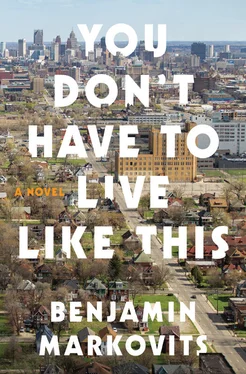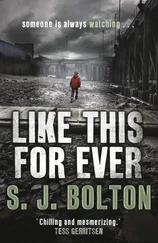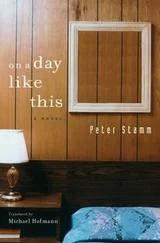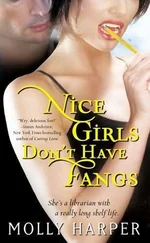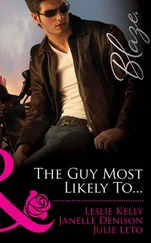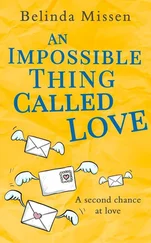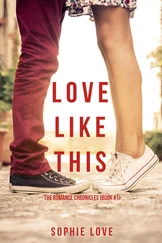“Clarence is not a topic of conversation,” Nolan shouted from the kitchen. “You need to stop that.”
“I wish he did. His mother is somebody a little goes a long way,” Mrs. Smith said.
After coffee, she left us to talk, and Nolan talked. It turned out he was perfectly happy talking about himself — he had a professional-confessional mode. His older brother got killed in a gang shooting when Nolan was still in high school. That was one of the things that straightened him out. The other was music. There used to be a record shop on Charlevoix, run by a white guy named Jez Lansky, who’d been at that corner since the neighborhood was about a quarter Polish. Probably he’d have got robbed out of business or beaten up if people didn’t like his records. But he played a lot of good music. Not just Diana Ross and Louis Armstrong, but Mable John and Billy Eckstine, Art Blakey and Horace Silver and Clifford Brown. Nolan’s dad used to say, “Jez is all right, you can hang out at Jez’s.” When he died, there was a line outside St. Albertus three blocks long following the coffin, and about half of those people were black. It didn’t matter that Jez was white and a homo and that he probably died of AIDS. Then they closed down that fucking church two years later, which had been there for about a hundred years, but this is Detroit.
“What instrument did you play?”
“I didn’t play any instrument. I liked the music, too, but what I really liked was the covers. My heroes were Reid Miles and Bob Cato and Mati Klarwein. Jez put me onto all those guys. I wanted to be a designer.”
That’s why he went to Ferris State, apart from the fact that they gave him a football scholarship. Because of the Kendall College of Art and Design. Nolan had a lot to say about art degrees. What he took was a four-year course and you needed to write a thirty-thousand-word dissertation. It was a degree . These days you could get a master’s for pressing a button on a camera thirty times. To change the subject, I asked him about his brother.
“He was like a low-level high school crack dealer. Not even a soldier, he was more like a small-business man, he was a kid with a lemonade stand. I don’t even think he was using. But then someone shot him in the neck.”
“Did they find out who?”
“Probably somebody owed him money. We don’t know.”
“Were you close?”
“White brothers are close to each other. He looked out for me, I looked up to him.”
“I don’t know that white brothers are always so close.”
We talked about his art, too. Coming out of college he wanted to make some really big art, he was obsessed with Diego Rivera, he wanted to apply the techniques of illustration on a large scale. I had noticed one of these pieces, a jungle scene painted on the side of an old factory — about fifty feet wide and a hundred feet tall. Later he got into photography, which is what his project with Gloria was about. The kids were just a means to an end for him, he was using them. The problem of art is always the problem of realism, he said, the relationship to reality. Big art for him was all about being bigger than reality, like, if it was bigger, it might be truer, too, or more real. Photography was the same deal. He talked a lot in this vein and I wrote some of it down, not because I was interested but I wanted to keep him happy. Right now he was working on a piece about his brother, about the crack scene in Detroit, called Looking for My Brother’s Killer . The point is the guy was probably dead, there was nobody to look for, but he was going to keep looking. He was hanging out with some pretty wrecked people and asking questions and taking photographs. Nobody remembered his brother. When you got people dying and going to jail at the rate they do, nobody remembers anybody. But photography was just a transitional phase for him. He wanted to push realism further, he wanted to make art that changed reality, that had an effect on it, and one of the forms he was looking at was legal art.
“What’s legal art?”
Lawsuits, he said. He wanted to sue people, where the art was just the legal act, the court papers and documentation, the judge’s ruling. But it cost money. A lot of what he did was apply for grants.
“Who are you going to sue?” I said.
“I ain’t angry but I got a lot of grievances, a lot of things needing correcting.”
I drove around Detroit with him, too — Detroiters were always driving me around. The first time it was just the two of us, and he took me around the old Black Bottom neighborhood, or what was left of it after urban renewal. “Negro removal,” Nolan called it, a line I had heard before, which slightly lowered my opinion of him. So he went around with borrowed ideas like the rest of us. He talked about Joe Louis and Bishop Franklin, Mies van der Rohe and other people. We walked under the highway intersections, the Chrysler Freeway and Gratiot Avenue, right by Ford Field, it was a dripping, cold November morning, through to the park on the other side, and I felt about as wet and cold as the roads we walked on. At one point I thought maybe this is where the guy dragged Astrid, but I don’t think it was. I asked Nolan if he knew her; he didn’t.
Then he bought me coffee to warm up, at a place called Wigley’s Meats. It was about eleven in the morning. We also ordered corned-beef sandwiches. Nolan told me a story about a crack house where he took some pictures. A lot of these places were whore houses, too, it wasn’t just a question of drugs and customers, but clients and audiences, people hung out. People get pretty amusing when they’re high or when they want to get high. One of the worst things he saw was a woman going down on her son, who was about fourteen years old, the mother was maybe in her late twenties, both of them needed a fix and guys threw money at them while they did it. Wigley’s was an upmarket tourist destination, sort of blue-collar chic, though I guess locals went there, too, it wasn’t particularly expensive. Nolan never lowered his voice.
“Why do you tell me this stuff,” I said.
“There is no human nature, there’s just law and economics. You set up people to want something, they’ll do whatever it takes to get it. Supply and demand.”
“That’s not what supply and demand is.”
“Fuck you, Marny,” he said. “You like me, you’re kind of scared of me, but you still think you’re smarter than me because I’m black.”
“That’s not what I said.”
“You saying it all the time, you just not listening to yourself.”
Another time he even took me out with some of his crack buddies, guys he met while looking for his brother’s killer. I felt nervous about this. Nolan wouldn’t tell me what the plan was. He picked me up in his car a little after ten o’clock — it was a Sunday morning. I said, “What, are we going for brunch?” Then we drove around and picked up a few other people, mostly in east Detroit, and ended up driving to a football game. The Lions were playing, and one of his buddies, a dealer, had a box.
When we picked up this dealer guy, Ernie, I had to get out of the front seat and let him get in. So I sat in back with two other dudes, who made me climb over one of them to sit in the middle. It was like being a kid again, which made me feel bratty. Ernie kept complaining about where I put my feet, he said my shoes were dirty, and get them off his clothes. The two guys in back with me were called Marcellus and Taequan. “Is that like Tae Kwon Do?” I said, and he wrinkled his nose like something smelled bad. With these people, I figured, you have to give as good as you get.
Ernie was a skinny, nervous-looking guy, maybe forty years old. He had a little mustache and didn’t wear anything but a nylon jacket, like a caretaker’s jacket, over his shirt, and skinny cotton pants and cheap sneakers. His color was muddy red, and he had one of those faces that look hard to shave — there were a lot of rough patches, little bumps, some with hairs growing out of them. It was about thirty degrees outside, a white, cold day, on the edge of snowing. We parked by Eastern Market and there were guys outside grilling dogs and drinking beer. I said to Ernie, “Aren’t you cold?”
Читать дальше
